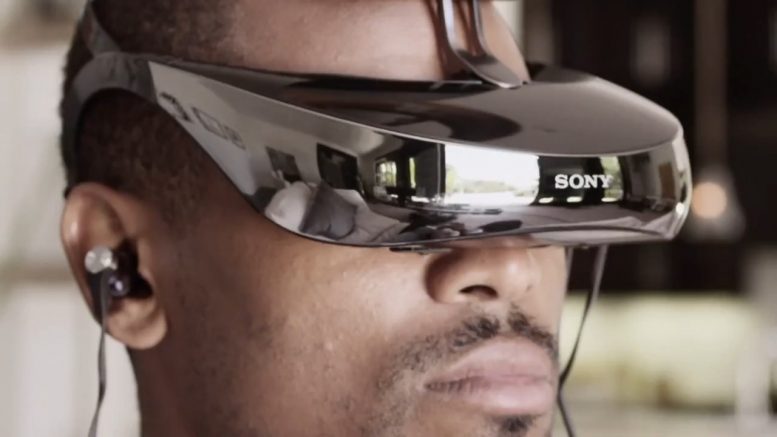Preliminary note:
This blog post is part of the course “Trends in Media”. The students were supposed to research a specific trend and build a use case for a publishing house. The results of their work are a presentation and this blog post.
A blog post by Samuel Trautmann, Sonja Woytena, Irem Yazgan, Fiona Mackie and Yiquing Liu. 12.01.2018
Virtual Reality
and its potential scope of application for publishing houses
In the winter semester 2017/18, we took the course Trends in Media, which is a lecture of the Mediapublishing study program. During this, we examined how current trends in media and technology like the visualization of information, data journalism, cross-device usage etc. can benefit and be implemented by publishing houses in the future. Our group worked on virtual reality (VR). In this blog, we will describe to you how we proceeded in this project. To analyze the potential uses of this technology in the publishing field, we decided to first do a detailed research about the background of VR. After unfolding the definition, origin, history, technology and current usage of the technology, we will talk about the possibilities for publishing houses.
What is Virtual Reality?
In VR, computer technology is used to create a simulated environment. The user’s eyes are located within the simulated environment. If the user’s head turns, the graphics react correspondingly. This can be achieved by stimulating as many senses as possible (vision, hearing, touching, smelling). Because of this, VR places the user inside an experience which allows them to interact with 3D worlds.
A Short History Overview
First, we’ll take a look at VR’s history. Already in 1930 Stanley G. Weinbaum had an idea about what VR is and what it may become. During the following decades new ways of stimulating a person’s senses came up, and in 1961 two engineers from Philco Corporation came up with the ‘Headsight’, a special head-mounted display. Ivan Sutherland had already described the concept of the ‘Ultimate Display’ in 1960. More and more ideas about the topic formed and took shape, and in the late 60s the term ‘virtual reality’ was coined. In 1980, two of the first commercial virtual reality devices launched and in 1993, SEGA announced the Sega VR headset for their Genesis console. The prototype glasses had head tracking, LCD screens in the visor and stereo sound. About eight years ago, in 2010, Oculus VR decided to release a Kickstarter project for their Oculus Rift VR goggles. Huge companies, e. g. HTC, Steam, Google, Lionsgate and Samsung started laboriously investing in VR technologies and experiences.
Not long ago, Google Cardboard created the concept for VR we know today, and other companies took note. Smartphone VR Goggles are letting consumers easily enjoy and experience immersive VR.
Virtual Reality Technology
Now, let’s see how VR technology can be made use of. Its most immediately-recognizable property is the above mentioned head-mounted display (HMD). Display technology is often the single biggest difference between immersive VR systems and traditional user interfaces. For instance, CAVE automatic virtual environments actively display virtual content onto room-sized screens.

Ill. 1: Head-mounted display; source: https://www.pakistandetectors.com/wp-content/uploads/2015/12/Sony-Head-Mounted-Display_-HMZ-T3Wmp4Still001.jpg
Opportunities and Threats
What’s important to note, is that there are many opportunities as well as threats when we talk about VR. Such opportunities can be the broad field of use and the many potential markets. Also, because it is a rather new technology, there is only small competition. Furthermore, there is a big interest in VR with a strong and loyal fan base.
Possible threats can be, for example, that the VR hardware depends on the VR content. There is still a lack of content can result in lack of sales. There is also the risk of overall failure, meaning that there isn’t a general acceptance for VR.
Major Players in Virtual Reality
Although there are many contenders in the market, there are a few ones that lead in VR technology. The most promising concepts are Google Cardboard, Samsung GearVR and Epson Movario, but also Oculus Rift, released only last year. But there are other players like Meta, Avegant Glyph, Daqri and Magic Leap who may surprise the industry with new levels of immersion and usability.
How Virtual Reality is being used today
There are several areas in which VR comes into play today. Here’s an overview on the current usages of the technology.

Ill. 2: Uses of VR today; source: https://www.equorum.com/wp-content/uploads/2016/12/AdobeStock_118195026-1-1080×675.jpeg
Gaming Industry
The Gaming Industry is one of the sizeable advocates of VR. Many common user interface metaphors in gaming have to be adjusted for VR (e. g.: Who wants to have to pick items out of a menu that takes up your entire field of vision?). The gaming industry has been quick to adapt as the hardware for VR gaming has become widely available.
Virtual Reality and Data Visualization
For many years, date visualization has benefited from VR. It involves the creation and study of the visual representation of data, meaning “information that has been abstracted in some schematic form, including attributes or variables for the units of information”. Recent innovations in display technology go from molecular visualization to architecture and weather models.
Virtual Reality for Aviation, Medicine and the Military
VR is also used for very different situations, improving aviation, medicine, military and many other fields. It is an attractive alternative to live training with expensive equipment, dangerous situations, or sensitive technology. Commercial pilots can use realistic cockpits with VR technology in holistic training programs that incorporate virtual flight and live instruction. Surgeons can train with virtual tools and patients and transfer their virtual skills into the operating room. VR can also be used for the treatment of mental illnesses. Post-traumatic stress disorder stands to benefit from the use of VR technology. It allows veterans to confront challenges in a controlled environment or overcoming phobias in combination with behavioral therapy. Police and soldiers are able to conduct virtual raids that avoid putting lives at risk.
Uses of Virtual Reality for Publishing Houses
Now that we know a lot about the background of the VR technology, we will investigate how it is able to benefit publishing houses. For this, we thought of a few situations in which the technology could be or already is being implemented.

Ill. 3: Virtual Reality in Publishing Houses; source: https://cdn-images-1.medium.com/max/1200/0*7sidA6aL2zUo2ch7.jpg
Book of World Records
Imagine you’re reading the Guinness Book of World Records, and you see all the pictures and descriptions of how the according record had been set. But since it can be hard to imagine how it actually happened, you wish there was a possibility for you to see how the person in the book actually did it.
Because of this (potential) costumer wish/need, it is possible to scan the pages of the Guinness Book of World Records and watch records taking place. Users can also see, for example, how they stack up against the tallest man in the world.
Manufacturers
If you were working as a manufacturer who’s responsible for new workers or apprentices, you might think about how these could easily learn how to work the machines (in addition to the user manual or verbal instruction) so that you don’t have to invest unnecessary amounts of time into explaining.
VR can be used to train service techs to install and service its products. It is ideal for complex physical objects and provides learning prospects unavailable in 2D media. The VR experience can combine the benefits of a textbook and a 3D model.
Field Trips
As a history teacher, you might like to go on a lot of school trips with your class. But because there is limited time and the school only offers a limited amount of resources, you’re not able to take your pupils to a lot of many trips. So you think about other measures to show them historical sites.
It is possible to bring VR field trips into the classroom. They are aligned to the curriculum and allow students to explore famous landmarks, jungles, oceans, and a slew of places they likely would never see in real life. It also helps students to visually understand certain topics, for example the human body.
Children’s Book
Many children love drawing and playing around with colorful toys, trying out things and exploring.
There are coloring book and VR app combos that bring the child’s colored-in design to life. Or a computer application can be implemented that works in conjunction with fairytales that can be turned into real life experiences.
Conclusion
As we found out, VR is up and coming and it plays a big role in many markets and areas. A lot of publishing houses have their difficulties adapting to the technological changes and find it hard to keep up. The more important it is for them to recognize opportunities that can benefit them. And one possibility can be the conjunction of their printed or online content with a VR device, like illustrated in the examples above. There is a wide depth of application possibilities in VR, and every industry should strive to identify whether or not they can be reasonably implemented in order to improve processes and create new capabilities.

